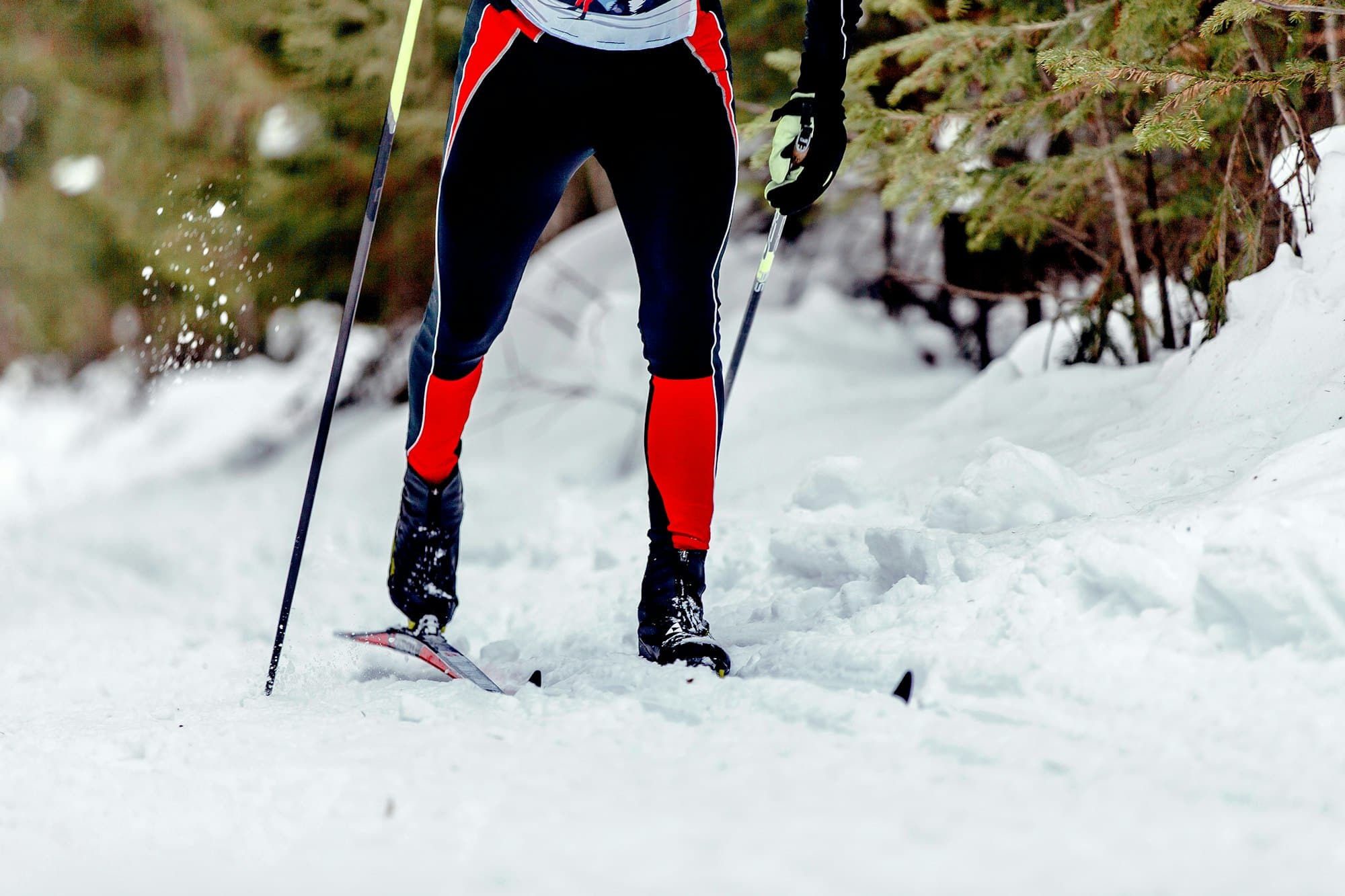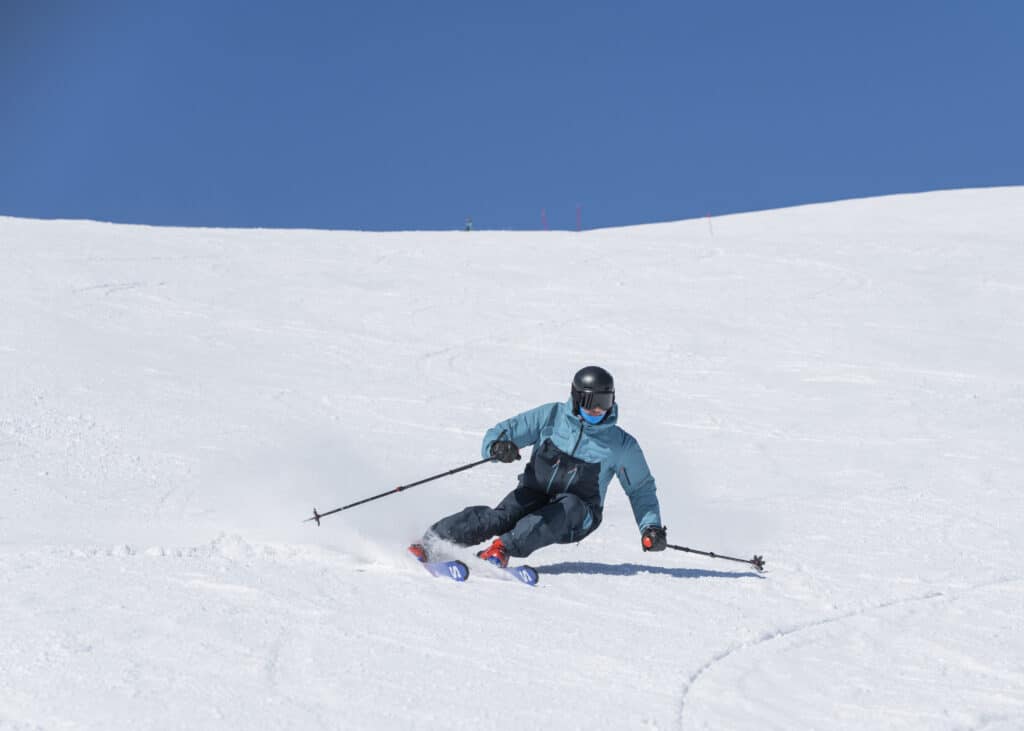Parallel skiing is an essential technique in alpine skiing where the skis remain parallel to each other throughout the turn, offering better control, speed, and efficiency. This style is a step up from the basic snowplow (or “pizza”) technique, how to parallel ski, and is essential for skiers looking, to advance to more challenging slopes.
Mastering parallel skiing can significantly enhance your skiing experience, allowing you to navigate varied terrains with greater confidence and skill.
Understanding Parallel Skiing
Parallel skiing involves keeping both skis equidistant from each other and pointing in the same direction as you make turns. Unlike the snowplow technique, where the tips of the skis are closer together than the tails, parallel skiing requires you to manage your balance and weight distribution more precisely. Learning how to parallel ski can significantly improve your control and efficiency on the slopes
Benefits of Parallel Skiing
Understanding and mastering parallel skiing can greatly enhance your overall skiing experience. Here are the key benefits of parallel skiing:
1. Improved Control
Parallel skiing provides better control over your movements, allowing for smoother and more precise turns.
2. Speed
This technique enables faster skiing since the skis are more streamlined and there is less resistance.
3. Energy Efficiency
By reducing the need for exaggerated movements and keeping the skis parallel, you conserve energy, making it easier to ski for longer periods.
4. Versatility
Parallel skiing is suitable for various types of terrain, from groomed trails to off-piste adventures.

Essential Techniques for How to Parallel Ski
Parallel skiing is a foundational skill in alpine skiing that involves keeping both skis parallel to each other while turning. It allows for greater control, speed, and efficiency on the slopes. For beginners, mastering how to parallel-ski involves understanding and practicing several key techniques. Here are the essential techniques for learning how to parallel-ski effectively:
1. Stance and Balance
- Stand with your feet shoulder-width apart and your skis parallel.
- Keep your knees slightly bent to absorb shocks and maintain flexibility.
- Lean slightly forward from the ankles, with your hips over your feet, ensuring your weight is centered.
- Maintain a balanced stance by keeping your arms forward and slightly apart, as if holding a tray.
- Look ahead, not down at your skis, to anticipate changes in the terrain.
2. Weight Distribution
- As you initiate a turn, transfer more weight to the outside ski (the ski farthest from the direction of the turn). This ski will support your body through the turn.
- The inside ski (closest to the direction of the turn) should have less pressure but still remain in contact with the snow.
3. Initiating the Turn
- To begin a turn, gently roll your knees and ankles toward the direction you want to turn. This action engages the edges of your skis.
- The edges of the skis will bite into the snow, guiding you in the desired direction.
- Use your lower body to steer your skis rather than your upper body. This helps maintain balance and control.
- Imagine your legs as shock absorbers, adjusting to the terrain while your upper body remains stable.
4. Completing the Turn
- The fall line is the path a ball would take if it rolled down the slope. As you turn, aim to cross this line smoothly.
- To finish the turn, gradually roll your knees and ankles back to a neutral position, bringing your skis parallel again.
- Control your speed by completing each turn, allowing your skis to point slightly uphill before starting the next turn. This reduces speed without needing to use excessive force.
5. Linking Turns
The key to effective parallel skiing is seamlessly linking turns. Develop a rhythm where each turn flows naturally into the next.
Practice on gentle slopes before progressing to steeper terrain to build confidence in your ability to link turns smoothly.
Use your ski poles to aid in timing and balance. Plant the pole on the inside of the turn (downhill side) just before initiating the turn. This movement helps guide your body and maintain rhythm.
6. Common Mistakes and How to Avoid Them
A common mistake in learning how to parallel ski is leaning back, which can cause you to lose control and speed. Always lean slightly forward, with your weight over the balls of your feet to maintain better balance and control.
Another crucial tip is to avoid rotating your upper body to initiate turns. Instead, focus on using your lower body and legs to steer, keeping your shoulders facing down the hill. This will help you make smoother transitions and maintain your speed.
Additionally, ensure even weight distribution on both skis. Overloading one ski can lead to imbalance and loss of control, making it challenging to master how to parallel ski effectively. Following these tips will enhance your technique and confidence on the slopes.
Want to Improve Your Ski Skills?
Mastering parallel skiing opens up a new world of skiing possibilities, from tackling steeper slopes to enjoying the thrill of carving turns. Remember, skiing is not just about speed but about control, balance, and the joy of gliding effortlessly down the mountain.
To learn how to parallel ski, focus on keeping both skis parallel and equidistant while making turns. This technique requires precise balance and weight distribution, which can greatly enhance your control and efficiency on the slopes. By mastering how to parallel-ski, you can take on more challenging terrain with confidence.
If you want to improve your ski skills, you definitely should try ski classes by Niseko Supreme. Since 2014, Niseko Supreme have been in Niseko, passionately sharing our knowledge with our clients and ensuring that everyone’s day with us is relaxing, fun, and fulfilling. Our vision is to inspire you with our work and example, so that you can find joy in skiing on your own.








